Sound design is the much-neglected part in comparison to visual art. It hinds behind the impactful colors and dazzling motions that are immediately absorbed by the audience. It continues to provide an immersive experience and works coherently with other elements in multimedia and performance.
Here you can find out more about what is sound design, its history, techniques, and applications in a variety of disciplines, and what it is like to be a sound designer.
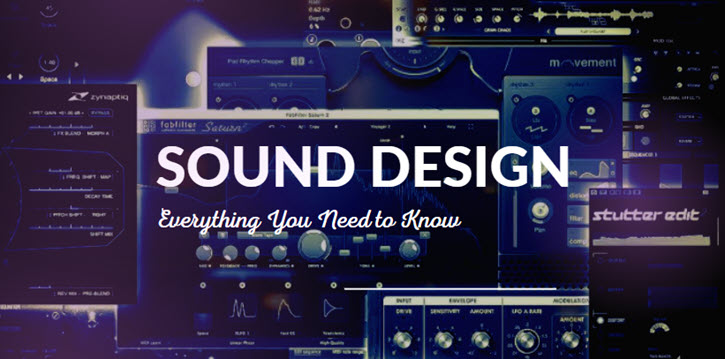
1. What Is Sound Design
Sound design is the blend of aural aesthetics and techniques to create a sonic environment and experience required by the subject matter. It is also the outcome of meticulous work by sound designer, audio editor, mixer, recording engineer and other personnel involved in.
Technically, it involves audio recording, creation, performing (fabricating foley to get recorded), editing, audio mixing, test and implementing in to related areas. Artistically, it demonstrates the sound designer's interpretation of the subject matter, with an aim to achieve and elevate the overall creation intent and thus offer an unforgettable experience to the audiences.
Sound design is playing critical roles in various fields and industries, including film and TV productions, theatres, video games and interactive applications, music, radios, podcasting, live performances and so on. Since sound design is yet to have established standards in different departments - maybe except for the theatre - it is free to evolve and has been crafted in various industries to fit what's needed.
1.1 Sound Design for Film and TV Production
Sound design for film and TV episodes encompasses a broad scope in audio production, sound arts, and the study of the film. It helps to set the mood of the storytelling, build tension when required in the plot, and make the audience believe the world presented in front of them.
Depending on how they influence the narratives of the film, the sound effects and scores can be parallel, contrapuntal, exaggerated or unmotivated.
- Parallel sounds are sessions that matches the mood of the scene. For instance, an uplifting soundtrack for a positive mood.
- Contrapuntal sounds go the opposite way and contrast strongly with the narrative in emotion or tone. For instance, in A Clockwork Orange (1971), the violent scenes are not accompanied by horror scores but by energetic and happy music.
- Exaggerated sounds are often used to emphasize the emotional impact or to suggest incoming threat.
Sound designer in a large studio is a colloquial term of respect, and the person is credited with this term out of respect. It is not the official job title in the industry, such as supervising audio editors and audio mixers that are specified by the union.
1.2 Sound Design for Theatre
The fundamentals of sound design for theatre are the same as in other fields. It evolves the recording, acquiring, creation and delivery of music, sound effects, foley, noise and every audible elements. Besides that, there are unique aspects pertaining to theatre sound design, among which the sound delivery system is the cornerstone.
It dictates how the sound is transmitted and how clear and intelligible it will be for the audience to enjoy. Because the speakers' location and how they are tuned will greatly affect the viewers experience.
Therefore, besides collaborating with directors to design sound that are in sync with the plot on stage, a theatre sound designer will also need skillsets to mix audio on set and troubleshoot sound delivery systems.
1.3 Sound Design for Video Games
Much like in other industries, the sound design for video games also involves the implementation of sound effects, music and recordings to enhance the player's experience. These audio assets are designed to provide an immersive environment to evoke emotion from the player and tempo and mood that are in line with what's happening in the game.
A sound designer for the game can join the creation early during the development of the game, or later when the game is in shape. They need to make sure the sound effects are in sync with the player's actions and the audio elements respond fitly to the sound environment.
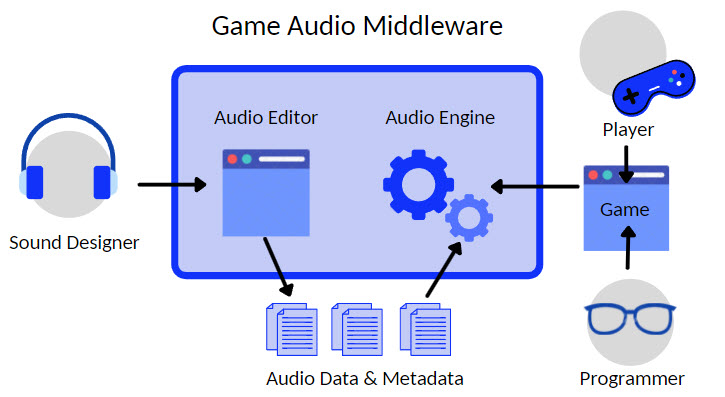
One distinction area is the use of middleware to edit audio as compared to other industries. It incorporates tools and plugins that are compatible with game engines so that the game sound designer can work non-linearly with more dimensions. For instance, unlike the soundtrack in other sound design fields, those for the game can be mixed dynamically and adjusted in correspondence to game engines.
How everything sounds in the game is not fixed, but dynamic according to the spatial and other physical relations. In that way, the sonic environment can make the game more realistic and engaging to play.
1.4 Sound Design for Music
Today's sound design for music goes beyond the traditional dimensions that involve recording and mixing. It gives the music a special twist and blurs the boundary between ambient sound and music scores.
Feeding on the languages and techniques of contemporary art music, sound effects and diegetic sounds are integrated into scores, opening up to new possibilities and happy coincidences along the way.
2. The History of Sound Design
The practice of sound design has existed long before the term itself was acknowledged. It encompasses several departments and involves areas such as sound effects, recordings, music score, dialogue editing, audio mixing. However, the term sound design itself is relatively a recent trend.
The idea is bonded to the first usage of "sound designer" credited to Walter Murch to acknowledge his effort on Apocalypse Now, in 1979. Before that, the crew members taking the role of aural manipulation are generally titled as the sound editor or supervising sound editor.
Francis Ford Coppola, who granted Murch the title, believes it's the best term to acknowledge the creative role played by Murch in terms of taking the work to the next level, with artistry added and overall intention better delivered.
It is evident that sound design involves not only the technical side with a certain mode of practice, but also calls for the creative power and a broad undertaking that deals with every aspect of the sonic environment. Walter Murch integrated with the team early in pre-production and supervised the overall departments for dialogue, foley, sound effects, and the mix.
There are other antecedents who played critical roles in film production, and no one doubts that their work can now be recognized as a piece of creative assets with sound design. Still, these artists are credited as Re-Recording Mixer or sound editors. Therefore, the first usage of sound designer for Walter Murch signifying the industries' awareness of the creative effort and aesthetics in the sound editorial.
3. The Role of a Sound Designer
The role of a sound designer can be as narrow as designing the sound effects, or as broad as how Walter Murch sees it: to plan, create sound and mix the final soundtrack, in a way that the sound designer is in charge of all the sonic components – sound, dialogue, SFX, voiceovers, music scores – just as the director is in charge of the visuals.
It requires the conceptualization efforts from the sound designer to strive for the aural aesthetics and interpret the thematic matter; technical skills to record, edit and mix audio, as well as practical strength to work with director, composer, audio recording engineers, forley artists, editor, audio mixer and other crew members.
Becoming a Sound Designer
Students interested in sound design can take BFA courses in audio production, music production and related field. Then seek an internship or pursue post-graduate education.
These courses will enhance the would-be sound designer's ability to create compelling soundtracks that go along with the motion pictures.
Skill Sets of Sound Design Students
The courses cover a wide range of related skill sets, such as sound production skills, sound sculpting, processing, synthesis. To be specific, there are instructions and practices for sound editing, foley and field recording, track-laying, mixing, VR audio, and surround sound designing.
They are accompanied by the learning of Pro Tools and other industry standard DAWs, with audio processing tools for compression, EQ, reverb, synthesis, sampling, etc.
Students aiming to become sound designers for game will also learn the technique related to the game engine and how to implement sound into the game realistically. Those interested in theatre sound design will explore subject matter such as the audio production for live events and acoustic physics in the theatre.
4. Key Elements in Sound Design
Dialogue is the conversation among characters and it forms one of the important parts of the storytelling. Sound design manipulates the dialogue to make sure it is intelligible for a specific scene and the narrative. The principles and techniques also apply to voiceover.
ADR or automated dialogue replacement is the re-recording of vocal clips by the actor in post-production in a studio. It is used to capture a clean dialogue without noise, replace lines or enhance performance when fixing production audio is not an option. Actors will watch the scene and dub to recreate the original lines for their own characters, and try to make it sound as if the vocal occurs on set instead of being added in post-production.
Besides ADR, the loop group (or group ADR) is another element involved in film production. It is dubbed by background actors that don't appear in the scene. For instance, in a fighting scene, the audience can hear groans and battle shouts not only from the leading character, but moans from the crowd that is off-screen.
It is a way to place more characters into the storytelling, while there are actually no such actors during the production.
Sound Effects (SFX) is quite self-explanatory. There can be weapon sounds, impact sounds, vehicles, or synthetic sounds. Some designers also prefer to refine the idea, are relate the sounds that don't occur in reality as SPFX, such as aliens, space ships, and laser sounds.
Above are what the sound designers called hard effects. Then there are also background sound effects that exist to make the scene seem more real. The audience may not notice the background noise when the sounds are there, but will feel unnatural when they are missing. There are several layers of elements in post-production:
Location sound: it is the audio recorded on set which captures all the sounds that are happening during the shooting and filming. For instance, there are room tones, ambience sound, and other background sounds such as dogs barking and sirens honking.
The room tones record the silence on set for 20-30 seconds, and it can be used to smooth out the cuts and transitions. For instance, the audiences will not notice unnatural absolute silence thanks to the room tones used in post-production. It comes in handy when the sound designer wants to cut dialogues and fill in gaps.
Ambience sound includes the room tones, background sounds, and other atmosphere noise. It helps to inform the audience the context and mood of the scene. For instance, there will be chattering in a crowded market, bird chirping in woods or raindrops hitting the roof. The ambient soundscape serves as the base for other sounds such as dialogues and music. It can be recorded as mono, stereo, or surround audio, or a blend of multiple layers.
To get well organized in post-production, sound designers can use a track for atmosphere noise such as water lapping near harbor, and another track for seagull squawking and crooning.
Foley sounds are the recording of real-life sound effects that are created or "performed". For instance, a foley artist can scrunch a piece of cellophane to imitate fire burning. Likewise, there are mimic of steak sizzling, high heels clattering, and doorknobs twisting.
Foley helps to cover up undesired sounds or enhance audio segments recorded on set, so that certain sounds can have a richer character that create a sense of realism on the viewer's side.
In post-production, the sound designer or the specialized foley artist will watch the scene, find and insert necessary sound effects for that session.
To get well organized on the soundtrack, a sound designer can assign tracks dedicated for Props SFX, instead of grouping all the SFX into one track.
Props Sound Effects are audio clips used to mimic the sound of props on set, such as door smashing, engine revving, or the sound of shell dropping after gun blasting.
Music score or film score is a piece of music composed originally to accompany the film. Traditionally, most of the musical scores are instrumental that exist to underscore the mood and emotion in the plot. There are diegetic scores that occurs in the scene, meaning the character can hear it; whereas non-diegetic scores are off-scene and exist to accentuate the mood, create tension, or define a character.
Incautiously, the music score may be used interchangeably with the concept of the soundtrack, while strictly speaking, they are quite different. A soundtrack can include music scores and other elements such as the dialogues and licensed songs released in the film.
Pro Tip: For serious production, well-organized track groups can enhance productivity and make it easy to control and adjust layers flexibly. Below are examples of group masters based on element type, and layers within the group. The abbreviations are written out of personal preferences.
Elements | Abbr. | Layers |
|---|---|---|
Dialogue |
DIA |
DIA1 |
ADR |
ADR |
Individual audio clips |
Sound Effects |
SFX |
Fight |
Ambience |
ABG |
Individual audio clips |
Foley Sound |
FS |
Footstep |
Props Sound |
PRP |
Engine revving |
5. Sound Design Workflow
The entire workflow involves the gathering of sound by recording or creating, audio editing, and mixing. Some of the processes can happen both during the production and in the post. Since sound design is both a technical discipline as well as an artful recreation, it always involves inspirations and surprises along the way. Reviewing, finding what's missing, and obtaining the needed materials then going back to editing and mixing is the norm.
A sound designer's work started early before the on-set production. The sound designer manager and other members of the crew such as the director will sit together to discuss the sounds needed for the story. Based on the plot and script, they can create a list of sound effects and music crucial for the production.
5.1 Sound Creating, Performing, and Production Sound Recording
With a better understanding of what's needed to accompany the motion picture and accentuate the plot, audios are gathered in various methods for specific purposes.
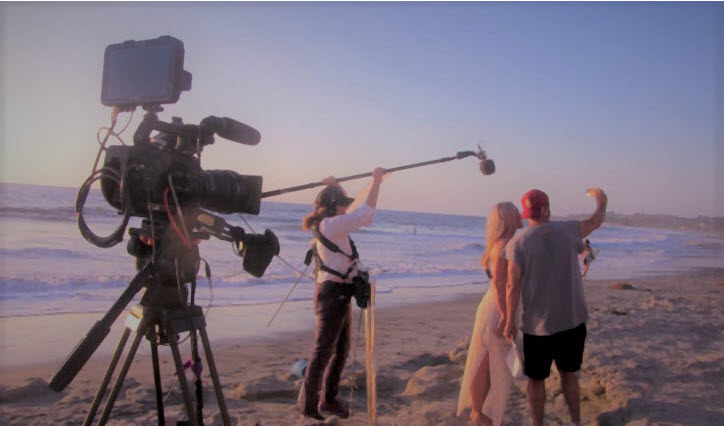
Besides recorded dialogues and voice overs, there are sound recorded during the production, or what the team referred to as sound recordings on set; For creation and invention, there are sounds created with synthesizers to imitate otherworldly things and set a tone and mood of the scene; and sounds performed to be recorded to mimic real-world sounds – as with the case of the foley sound – often exaggerated but well fit into the scene.
The sizzling sound of a bacon in the frying pan might not be that loud in everyday life, but when it's on-screen and being reproduced by crinkling cellophane, the audience somehow will feel that's how it should be. In a similar manner, even the background is fabricated, and the actions such as punch and fight are audible. As long as the audience interprets the sound as the realistic ones, it is a success.
The aural assets can be acquired during production or in post-production. For instance, after analyzing the assembly and the scenes, the sound designer might find certain dialogue needs to be improved or inserted, and other times there are needs to feature in off-screen sound to add virtual characters. That's where ADR and loop group come into the production.
To wrap up, location recordings, studio recordings, foley performing, ADR, and digital productions together make up the aural aesthetics in sound design.
5.2 Create Sound Design for the Sequence
Based on the plot, the previous discussion with the director and other crew members, and a list of the shots and accompanying requirements for sounds, the sound designer or associates begin to assemble everything in the audio editing software, and manipulate those elements to create the sound design.
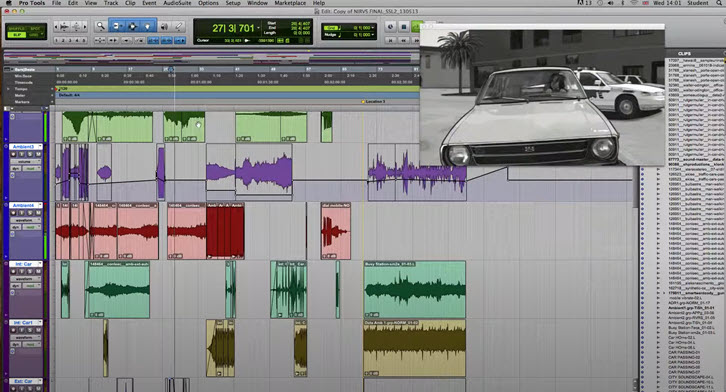
A typical process of editing usually involve the following stages:
1) Layer the Background Sounds
It's a process for the editor to bring in the room tones, air tracks, and ambient sounds into the tracks. They create a noise base for other elements to lay upon, and thus it's paramount to consider how much the backgrounds are needed to go well with the dialogue, without standing out and covering up the latter.
2) Assemble and Level the Dialogue
With the atmosphere noise to work on, dialogues can be assembled, layered, and edited. It involves the syncing of the dialogue to the scene and normalizing to smooth out the conversations.
Besides making sure the vocal follows the rules of broadcasting or projection in terms of volume, not exceeding certain decibels, it is also important to balance the background sounds in relation to the leveled dialogues. Some editors or dedicated dialogue mixers will apply EQ and denoise at this stage for certain points when it is necessary.
3) Add Sound Effects and Music
Then it's time to weave sound and music score into the scene. It always involves the analysis of the scene and deciding what's best for the storytelling.
Take the designing of sound effects and forley as an example. For a shootout scene, the editor will want to synchronize the gunshot effects at the correct timing, while also judging whether the existing SFX sounds too far or too close based on the character's position. Also, a machine gun will sound like anything but a magnum pistol, which requires an acute ear and sophisticated knowledge of acoustics and familiarity with the sounds produced by various props.
The process involves repeated playing back, comparing, editing, trimming, and fixing.
5.3 Audio Mixing and Delivering
After the backgrounds and hard effects are carefully chosen and edited, sound mixing enters to produce the final soundtrack for the movie or TV.
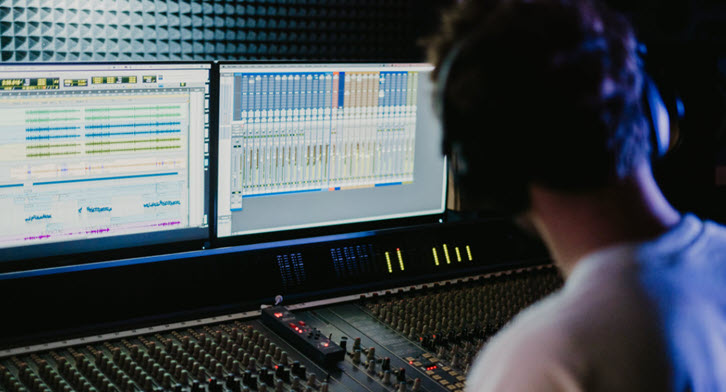
The sound mix generally involves four stages: premix, final mix, playback, and delivery. The ultimate goal is to ensure every audible element blends in naturally for the narratives, and that there won't be a single element that stands out to ruin the overall harmony.
After the sound designer (or dedicated mixer if there is one) manages all the elements in shape, there is usually an audition that brings everyone to the table. Directors, editors, producers, and other stakeholders will hear through the entire sessions and request fixes or express their impressions. The result is a list of fixes to check and improve and get ready for delivery.
6. Sound Design Techniques and Tools
Solid knowledge in audio manipulation paves the way for artistic sound design. It covers a broad range of theoretical and practical aspects, from the physics of audio waves, appreciation of art and narrative subject matter, to the technical know-how of DAW (digital audio workstation), synthesizers, MIDI, and tools and plugins.
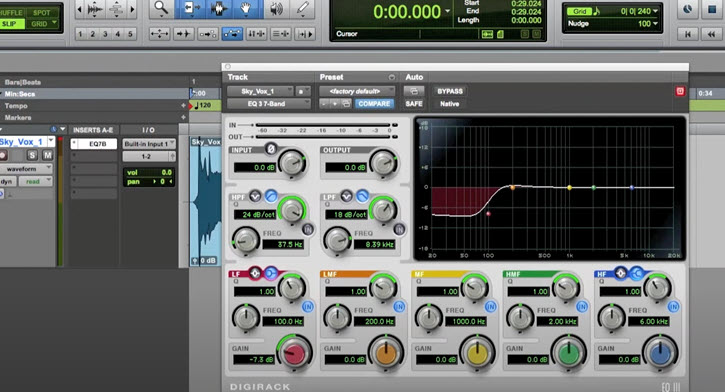
A proficient use of these tools and techniques can make the sound design process inspiring and rewarding. One can take out a portion of the recording and incorporate the sample into another recording to do the sampling, take waveforms and run them through filters, effects and envelopes to create a synthesis, and use MIDI effectively to connect musical instruments, computer programs and hardware.
Using DAW tools and plugins, sound designers and audio editors can utilize ADSR (attack, decay, sustain, release) envelopes to affect the timbre, quality and color of audible elements, use filters such as low pass, high pass and band pass to achieve desired results, and flexibly play around with effects such as distortion, flanger, expansion, bitcrusher, chorus, etc.
Below are some tools offered in DAW and plug-ins:
Equalizers (EQ)
As the EQ can alter the "color" of audible elements, it is a handy tool for a sound designer to manipulate the sound. Theoretically, the equalizer adds energy (in terms of amplitude) to frequencies pinpointed by the editor. After the manipulation, certain frequencies will stand out against others compared to the original recordings.
Boosting the volume of chosen frequencies can alter the tone and timbre of instruments and vocal sounds. With tools offered in graphic equalizers, it is also possible to influence neighboring frequencies with high pass, shelf, notch, bell, etc.
Compressor
Not every audio clip share the same levels and energy when composed on the audio tracks, and it would be a nightmare when there is a sudden harsh sound. That's when a compressor comes into aid. Since it can intuitively adjust the dynamic range of the audio signals, it is a powerful tool to mix audio tracks.
The sound designer or the assistants will playback the audio in real time, and see to it that the energy level never hit the peak. By setting the threshold, attack time, and release parameters, the sound designer can well level out and color the audible assets creatively for better storytelling.
Remove Vocal Sibilance (De-Ess)
Clarity is paramount in dialogue editing, and one of the frequently used tools is the De-Esser. There are powerful plugin or native tools in DAW software. A De-esser works nicely to remove the sibilants (the hissing sound) and make them less conspicuous.
Denoise
In sound designs, some noises are fabricated and added on purposes, such as the ambiance and room tones. The noise here are unwanted sound to be removed in post-production. For instance, there might be noises caused by a lavalier mic rustling against the cloth.
Reverb
Reverbs are sounds bounced back when it hits a surface, creating a persistent sounding and varied based on the size of the space.
It can be used in sound design to create a sense of realism. For instance, when the motor riders chat and enter a tunnel, the dry voice should be altered because the tunnel reflects sounds.
DAW tools usually offer presets to imitate locale such as hall, chamber, plate, exterior, etc, and further discriminating them into small, medium large spaces.
Tips to Enhance the Storytelling with Sound Design
How sound effects are used can either sell the visual elements or ruin them. It's why people are able to watch Avatar and not be immediately pulled out of the experience. And it's why the practical effects and meticulous sound design of Jurassic Park is still a masterclass in how to fool a viewer's brain into believing the impossible.
And this isn't exclusive to big-budget films. Sure, an Avengers movie will have a higher production budget than short films, vlogs, wedding videos, etc. Still, these same tricks can be used to implement sound design to enhance the storytelling for any multimedia project.
1. Create Extra Layers of Ambiance
It's hard to really capture the feeling of a place with native audio. Unless you invest in some hardcore microphones and spend hours collecting background sound, you're not going to create an immersive soundscape that wraps around an audience like a cozy blanket.
When you are planning a project, think about the type of environment you will shoot in. What are the sounds you would expect to hear there? Is it distant traffic from outside a building? Footsteps or voices upstairs? What about the hum of an A/C unit or a clanking radiator?
These sorts of sounds won't transform your video into an Oscar-winning masterpiece. But what they can do is build a realistic setting. You want enough sound that viewers hear but don't notice — if they're paying attention to background sounds, then the noises are distracting from the visual elements instead of enhancing them.
2. Add Weight to On-screen Action
If you've ever watched videos of Foley artists at work, you know that a lot of the sounds you hear in film, TV, and even YouTube aren't accurate representations of real life.
That's because the video has taught audiences to expect certain sounds for certain actions. The comic book-level punching sounds or the shing noise of your favorite Game of Thrones sword fights aren't realistic. But scientific reality doesn't matter all that much — that's part of movie magic, of convincing people to believe things that aren't true to life.
Good sound design adds weight to things. Whether you're enhancing certain sounds, replacing others, or adding noise to draw attention to something, sound design gives you a new level of creative control. And when actions have more weight, they become more powerful pieces in the story you're trying to tell.
3. Tell Stories without Extra Dialogues
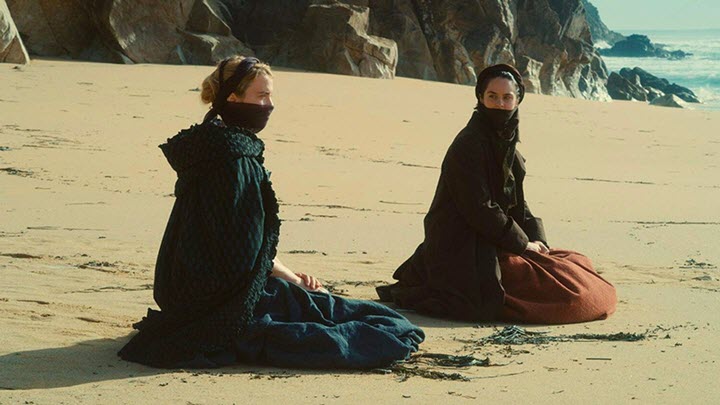
There's an old saying among writers that the best stories "show, don't tell" what's happening. In other words, a good storyteller can pull you into the action without having to specifically describe every single detail.
That translates to video too. You don't want to zoom in or specifically call attention to pieces of a scene. But the clever use of sound design can do that for you, subtly enhancing the story in a way that feels organic. Think of it as letting the viewer feel clever for noticing something, even though you know your use of a sound drew their attention to that little detail
4. Control the Mood and the Emotion
You can think of emotion as the byproduct of good storytelling or acting, but there are other ways to evoke that. The horror movie genre in particular has written the book on this trick.
When you watch a classic like Alien, you aren't necessarily focused on the sound effects in the film. But it's the small noises that drag you into the scene. It immerses you at the moment, and suddenly the anxiety you feel is a real, primal emotion. A distant clank isn't just a sound effect — it's a trigger for the audience as well as the characters.
5. Take Ownership Of Quiet Moments
You might already be thinking about how you can add sound effects to tackle one (or even all four) of the previous things on this list. After all, these tricks are meant to change your perspective, to help you think of sound design differently, and to elevate the quality of your videos.
But sound design can be the absence of sound too.
Let's go back to the example of horror movies. A well-timed sound effect can deliver a heart-stopping jump scare. But intentional silence can be just as powerful.
It's the lack of sound in A Quiet Place that sets the tone of the entire film. Sure, that puts extra pressure on the sound design elements since they'll get extra attention. But it does everything on this list at once: adds ambiance, gives weight to action, enhances storytelling, and injects emotion.
And, of course, it puts you in control of every single moment. Whether it's a huge, bombastic set piece or an epic worldbuilding shot or an intimate, somber moment, sound design makes you more than just a better filmmaker. It's a direct path to becoming a better visual storyteller, and it's a skill you can carry forward into every sort of project you'll tackle.



